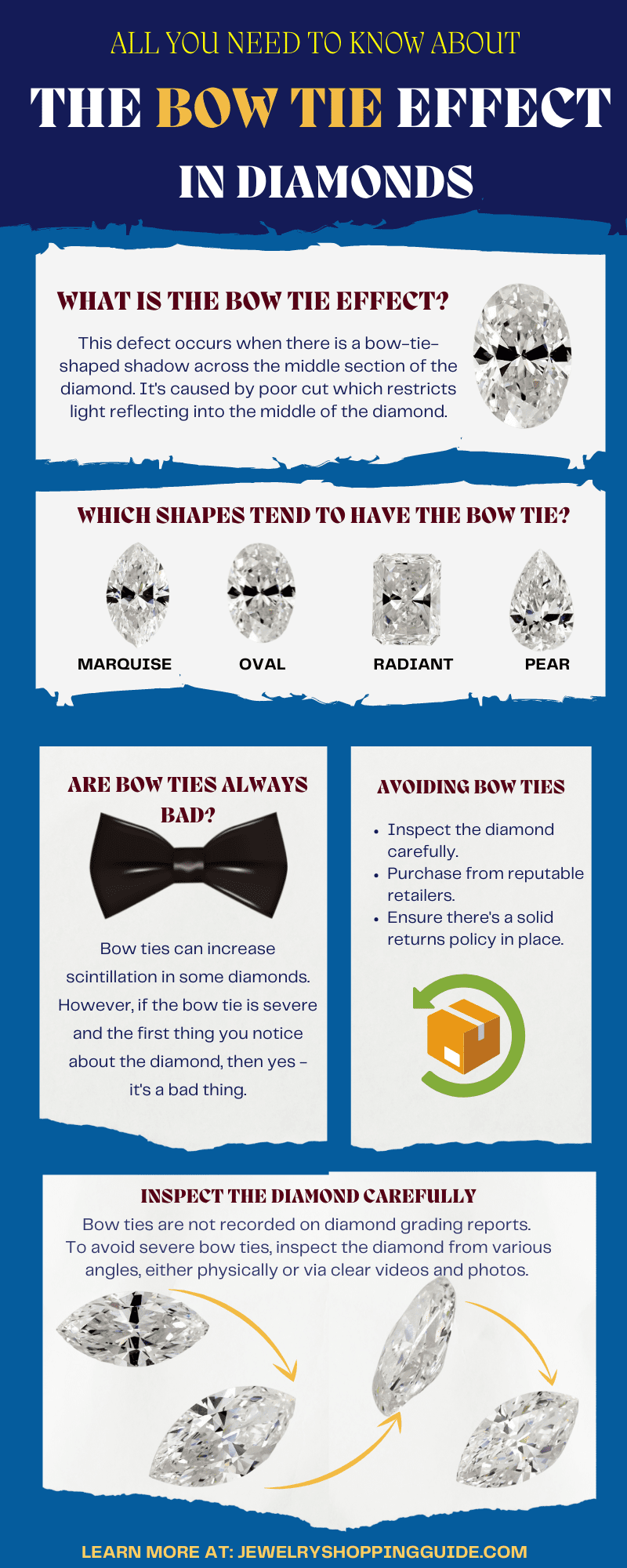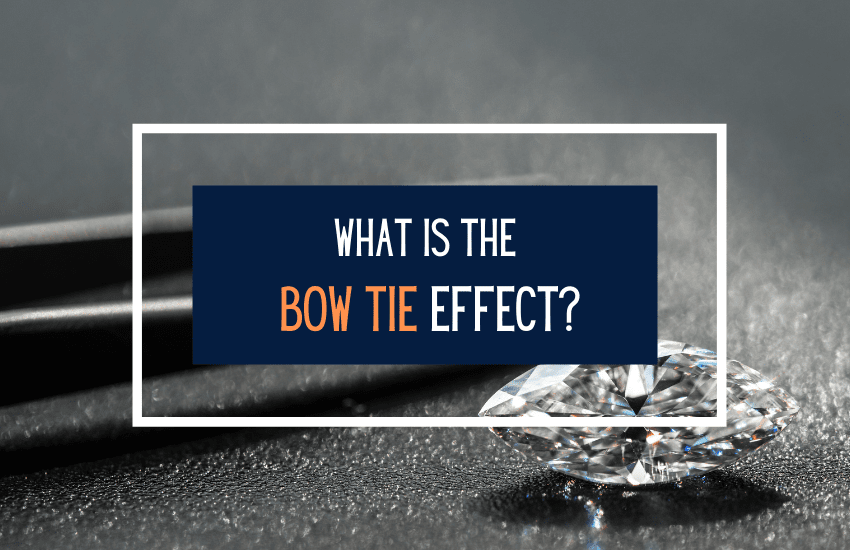
Table of Contents
One of the more easily noticeable defects a diamond can have is the bow tie effect. It’s easy to spot and avoid diamonds with the bow tie if you know what you’re looking for. The good news is that the most popular diamond shapes (round, cushion, and princess) never have bow ties. But for some other fancy shapes, bow-ties can be an issue.
What is the Bow Tie Effect?
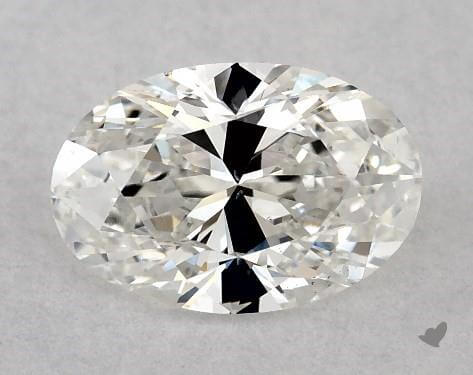
A bow tie looks exactly what it sounds like – a bow tie. It consists of a black “stripe” running across the surface of the stone. When viewed at certain angles, the dark stripe will be clearly visible, reducing the beauty of the stone.
Some people wrongly believe that:
- The bow tie is due to certain chemical coloring inside the stone.
- It occurs when there are particular inclusions in the diamond.
- It has to do with “light leakage” through the sides of the stone, which is one of the more common problems in diamonds.
The bow tie has little to do with the above factors. Instead, it’s caused by poor cut.
Diamonds with bow ties have a zone in the middle, where light isn’t reflected properly due to poor cut quality. The bow tie effect is only visible from certain angles. Take a look at this rotating diamond. Note how it looks perfect from some angles, but only features the bow tie when viewed face up. Often, the bow tie shows up because of the shadow of the viewer’s head reflected within the diamond. In essence, the bow tie is a shadow inside the diamond. This results in that part of the stone appearing darker.
This shouldn’t typically happen – diamonds are cut in such a way that they always reflect light throughout their bodies and don’t have such shadows inside them. However, if the cut isn’t perfect diamonds can end up with a bow tie whenever you lean over to look at them.
Which Diamond Shapes Have Bow Ties?

The bow tie is common in elongated fancy cuts such as the oval, pear, and marquise cuts. Some square shapes like the radiant cut can also show bow ties. However, other shapes like the round brilliant, princess, cushion, and emerald, don’t exhibit bow ties.
This is because it’s hard to avoid bow ties during the cutting process of elongated shapes – their middle sections are too long, and it can be difficult to cut the facets there to reflect light properly.
Why Do Only Some Elongated Diamonds Have Bow Ties?
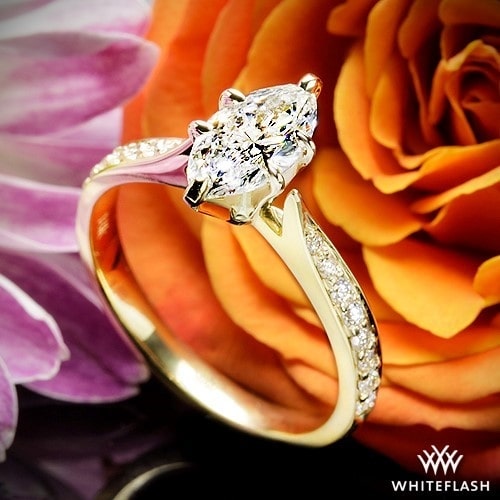
However, not all elongated shapes display bow ties. It’s easy to think that cutters should simply not cut bow ties in their diamonds, but diamond cutting is complicated work and even the best diamond cutters aren’t perfect. There are the several factors that can result in a diamond bow tie:
- A Mistake: The cutter may have cut the diamond poorly with misaligned facets by accident.
- To Save the Rough: The cutter may feel forced to cut the diamond in such a way because the alternative is to cut too much rough off the diamond and reduce its carat weight excessively. At the end of the day, while every cutter wants to craft the most beautiful diamonds possible, this is a for-profit industry and the bigger the stone is, the better.
- Avoiding Inclusions: The cutter may have had to cut the diamond this way to avoid bigger inclusions. Diamond bow ties are unsightly, especially when they are very pronounced, but sometimes they may be the lesser of two evils.
Are Bow Ties Always A Bad Thing?
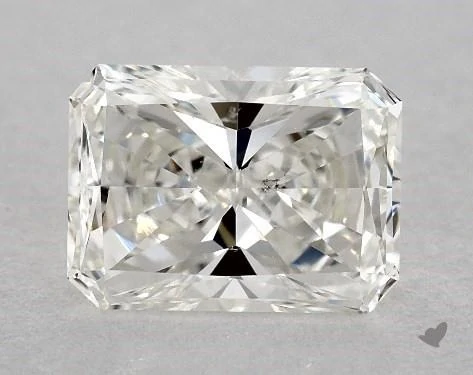
Almost all marquise, oval, and pear-shaped diamonds have some extent of bow tie, but what differentiates them is the severity of the bow tie. Most are often seamless and not so obvious.
In fact, certain bow ties are even viewed as a positive – if the bow tie effect isn’t too pronounced and if the cutter has shaped the stone well around it, the bow tie can even add a degree of scintillation to the stone and enhance its sparkle, like this one. Oval, pear, and marquise-shaped diamonds with absolutely no bow ties can sometimes look dull and boring.
Another thing to keep in mind with bow ties is that dishonest vendors will often try to twist this and claim that bow ties are always a good thing.
It’s common for many retailers to tell customers that bow ties are unavoidable in elongated fancy shapes and that they enhance the beauty of a stone.
This is all false.
Lighter bow ties can have a certain positive effect on the stone’s appearance but overall, this effect is considered a negative on the diamond’s appearance, so avoid it if you can.
Bow Ties Are Not On Grading Reports
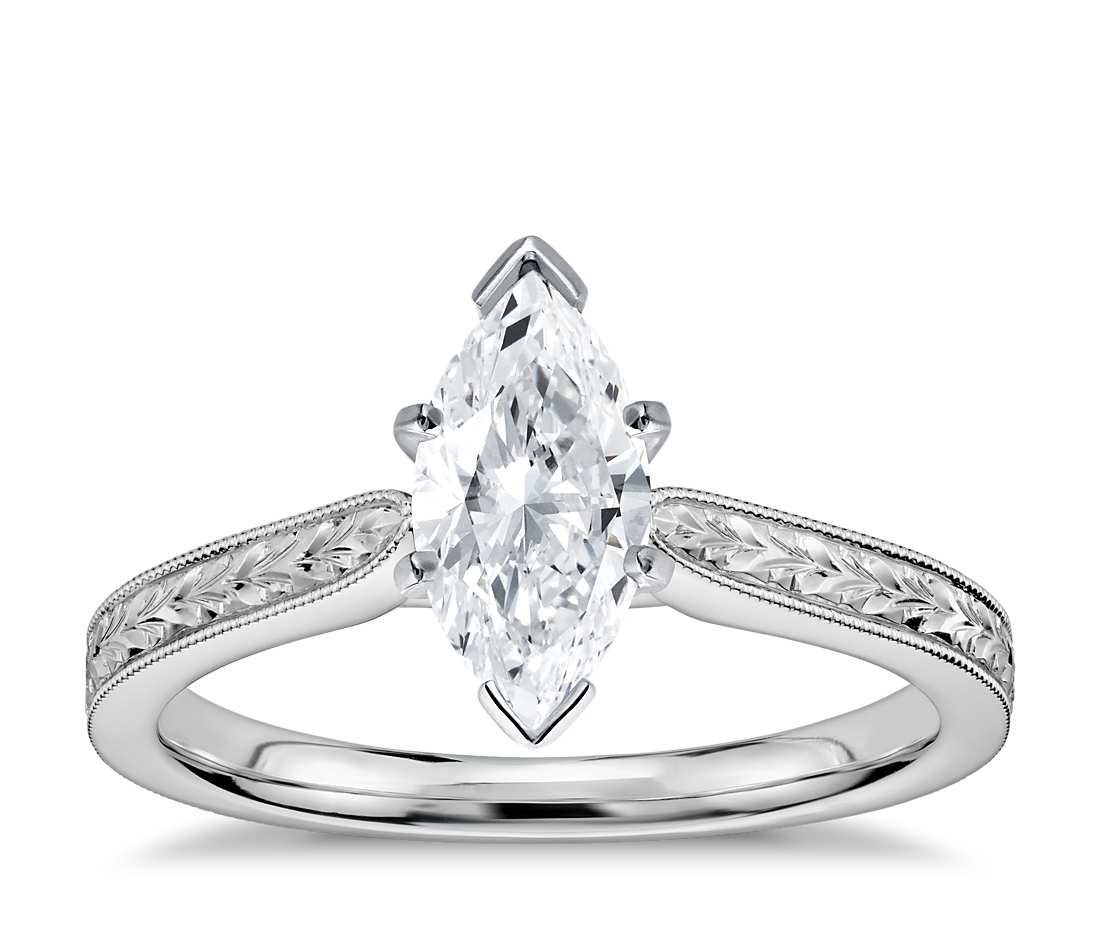
The bow tie effect isn’t listed on the diamond grading report. This means that if you purchase your diamond blind, without seeing images and videos of the actual diamond, you could be buying a stone with a severe bow tie effect and not know it until you receive the diamond.
How to Avoid Diamond Bow Ties When Shopping
Even in physical stores, it can be difficult to notice a bow tie due to the lighting of the store. It’s always good to check the diamond from all angles under various sources of light. If purchasing online, ensure that you can see a 360-degree video of the stone and can magnify the images.
The two pear cut diamonds below have nearly identical specifications and on a grading report, they would appear the same. However, which of them would you choose?
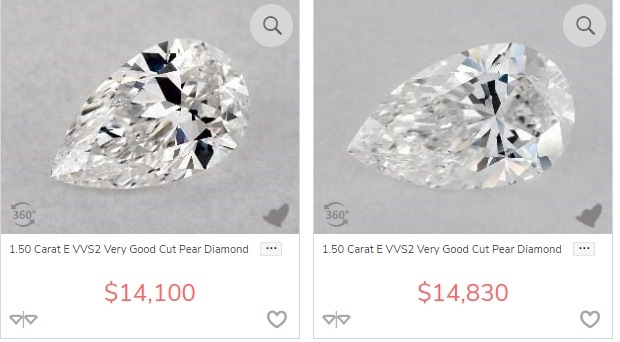
The diamond on the left has a noticeably severe bow tie whereas the diamond on the right is more aesthetically pleasing. When diamond shopping, it’s important to:
- Inspect what you’re getting before finalizing the purchase. This is easier done in physical stores but reputable online vendors like James Allen and Blue Nile offer HD 3D videos of all their product, allowing you to inspect the stone closely and in more detail than in a physical shop.
- Only buy diamonds from reputable vendors. Whether online or offline, you should always make sure that you’re getting your diamonds, engagement rings, and other jewelry pieces from adequate and trustworthy stores.
- Make sure the store has solid returns policies in place. This way, if you notice a problem such as the bow tie effect later on, you can simply return the diamond or ring for a refund or a replacement.
FAQs About the Bow Tie Effect
1. What shapes show the bow-tie effect?
The bow tie effect is common in marquise, pear, oval, and to some extent, radiant cut diamonds.
2. Do perfectly proportioned diamonds have bow ties?
No, perfectly proportioned diamond shapes, like round and square cuts, don’t exhibit bow ties. They’re common in elongated shapes.
3. Should you avoid bow ties in diamonds?
Bow ties are common in diamonds, so you can’t avoid it altogether in elongated shapes. However, if it’s extremely severe, it can make the diamond ugly and should be avoided.
Final Words
When purchasing a diamond shape that could be prone to bow ties, always make sure that you see the stone carefully and have quality imagery of the stone. This will help you to make an informed decision as to the aesthetic and physical properties of the diamond.
For these reasons, we recommend searching on James Allen, which currently has the best diamond display technology of all online diamond retailers. Blue Nile is also catching up to James Allen in this respect and offers decent diamond imagery to streamline online shopping.
While bow ties are not a major issue in most cases, if it’s the first thing you see when you look at a diamond, then it’s best to avoid that stone and go for another. Your diamond can have a bow tie, but if the bow tie takes more attention than the diamond itself, it undermines the point of having a diamond in the first place.
